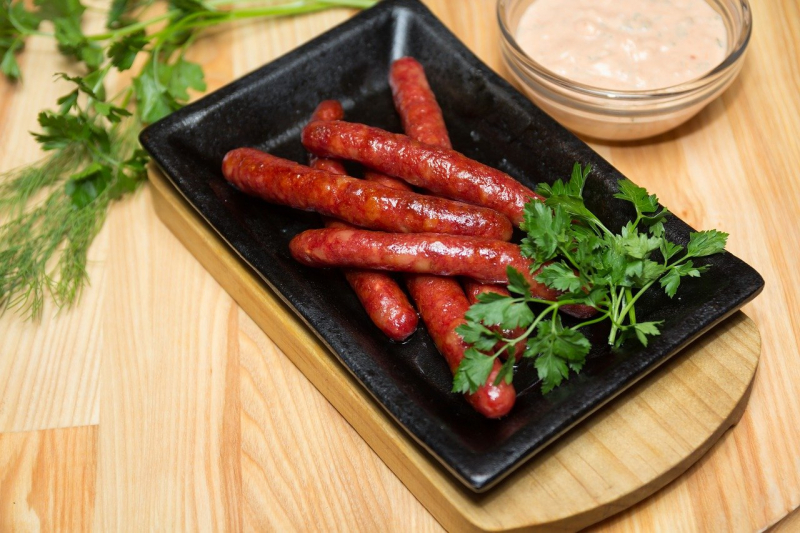Butifarra

Hold first place in top 10 Best Peruvian Street Foods is Butifarra. The process begins with selecting the right cuts of pork meat. Lean cuts like shoulder or loin are chosen for Butifarra, and the meat is carefully trimmed of excess fat and connective tissues. The selected meat is then coarsely ground to achieve the desired texture; the coarseness of the grind is a distinctive characteristic of Butifarra.
The ground meat is seasoned with a mixture of ingredients, which may include salt, black pepper, garlic, and other spices; the exact spice blend can vary based on regional and personal preferences, making each Butifarra unique. Once seasoned, the meat is mixed thoroughly to evenly distribute the spices and create a well-balanced flavor profile. At this stage, some recipes may call for the addition of a small amount of ice water to help bind the ingredients together.
The seasoned meat mixture is then stuffed into natural casings, usually made from the intestines of pigs. The casings are tied off at regular intervals to form individual sausages. After stuffing, the sausages are left to air dry for a period of time. This step helps to develop the characteristic texture and flavor of Butifarra; it can take several hours to a few days, depending on regional traditions and climate conditions.
Butifarra can be prepared in various ways; it can be grilled, roasted, boiled, or even fried. Each method imparts a distinct flavor and texture to the sausage; grilling is a common choice, giving the sausage a smoky and slightly crispy exterior. Butifarra is often served in slices or as a main dish, accompanied by a variety of side dishes such as bread, aioli, or roasted vegetables. It can also be used as an ingredient in other dishes, adding its unique flavor to stews and casseroles.










